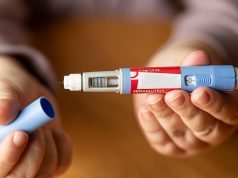Diabetogenic impact of statins increases as fasting plasma glucose, triglycerides, and BMI increase
WEDNESDAY, Nov. 2, 2016 (HealthDay News) — For patients without diabetes, the incidence of statin-associated type 2 diabetes mellitus (T2DM) is relatively low, according to research published in the Nov. 1 issue of The American Journal of Cardiology.
Payal Kohli, M.D., from Kaiser Permanente in Denver, and colleagues conducted a retrospective analysis of data from subjects without diabetes in the Treating to New Targets (TNT) and Stroke Prevention by Aggressive Reduction in Cholesterol Levels (SPARCL) trials to identify increased risk of statin-associated T2DM. Participants were subdivided into four groups: normal fasting glucose (NFG) and triglyceride (TG) ≤1.7 mmol/L; NFG and TG >1.7 mmol/L; prediabetes mellitus (PreDM) and TG ≤1.7 mmol/L; and PreDM and TG >1.7 mmol/L. Comparable groupings were created by substituting body mass index (BMI) values for TG concentration (<27.0 and ≥27.0 kg/m²).
The researchers found that 8.2 percent of the total population developed incident T2DM. There was variation in T2DM event rates (statin or placebo), from a low of 2.8 percent/3.2 percent (NFG and TG ≤1.7 mmol/L) to a high of 22.8 percent/7.6 percent (PreDM and TG >1.7 mmol/L); the values were intermediate for only elevated TG >1.7 mmol/L (5.2 percent /4.3 percent) or only PreDM (12.8 percent/7.6 percent). The differences were comparable with BMI values.
“These data suggest that the diabetogenic impact of statin treatment is relatively modest in general,” the authors write.
Several authors disclosed financial ties to pharmaceutical companies, including Pfizer, which funded the TNT and SPARCL clinical trials.
Full Text (subscription or payment may be required)
Copyright © 2016 HealthDay. All rights reserved.








